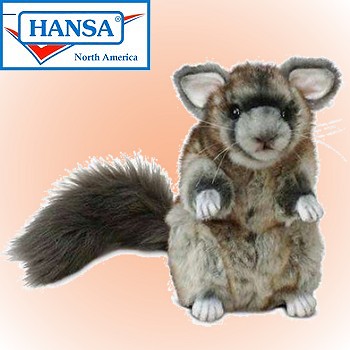|
|
Introduction to Chinchillas as Pets
Chinchillas are native to South America. They are in the
rodent family, but don't necessarily look like the usual
image of a rodent as they have short noses similar to a
rabbit, thick, plush, usually gray hair and big roundish
ears. An adult chinchilla is about the size of a wild
Cottontail rabbit and looks a little like a short-eared
rabbit.
They live in the Andes Mountains, and are most active at
twilight, just as the more familiar deer, rabbits, and even
dogs and cats and many other animals. Chinchillas belong to
the scientific family Chinchillidae, along with their
cousins the viscachas, which look very similar to rabbits.
Their name comes from the Chincha people of the Andes, who
wove their thick soft fur into clothing. Chinchillas first
became known outside of their native habitat when a Spanish
priest began to try to breed them in captivity for their
fur. Their beautiful soft fur almost led them to extinction
in the wild because of over-trapping.
But their soft cuteness also ended up saving the species
when a man from California, USA, who was working as a mining
engineer in Chile, grew attached to a chinchilla he kept as
a pet and finally convinced the Chilean government to allow
him to trap more chinchillas to take home and try to breed
them.
He and his helpers spent three years climbing about in the
mountains and managed to catch only eleven chinchillas, only
three of which were females. He then spent a year gradually
bringing his chinchilla herd down from the 12,000 foot
heights to sea level so they would have time to acclimate
along the way. Those well-loved wild chinchillas eventually
made their way to the United States where they bred and
began the domesticated chinchillas. Since the 1960's
chinchillas have continually increased in popularity as
pets.
Chinchillas make good indoor pets as they have no odor or
dander and so don't cause allergies, and seldom get fleas
due to the thickness of their hair. Although they tend to
sleep during the day and get active in the evening, they are
social animals and so will tame well and be affectionate to
their owner. They are vegetarian and eat primarily pellets
made for chinchillas and a few good alfalfa hay cubes each
day. Your local pet store should stock both.
See also: What to Feed Pet Chinchillas
Provide a standard small animal water bottle, refreshed
daily, a ferret cage or something similarly roomy, good
food, something to chew (remember, rodent teeth never stop
growing) a volcanic ash dust bath a few times per week,
places to climb and run, and a good soft pine (never cedar)
shaving floor, and keep the cage in a cool and quiet part of
the house and your chinchilla should be happy and healthy.
Creatively Cool & Totally Amusing Stuffed Chinchillas

|